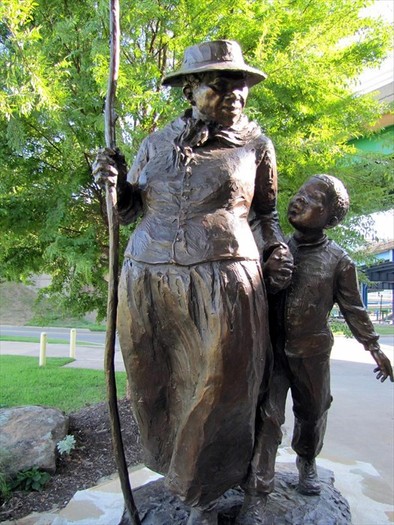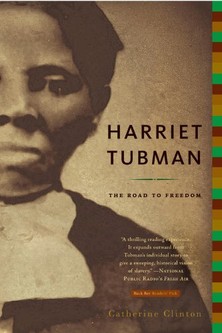Harriet Tubman Statue-Little Rock
Introduction
Text-to-speech Audio
Images
This sculpture of Harriet Tubman was one of several statues commissioned and dedicated in 2004 as part of a walkway between the River Market and Clinton Library.

Catherine Clinton, Harriet Tubman: The Road to Freedom. Learn more about this book by clicking the link below.

Backstory and Context
Text-to-speech Audio
As a child in Dorchester County, Maryland, Tubman was beaten by various masters to whom she was hired out. Early in her life, she suffered a head wound when hit by a heavy metal weight. The injury caused disabling seizures, headaches, and powerful visionary and dream activity, which occurred throughout her entire life. A devout Christian, Tubman ascribed the visions and vivid dreams to revelations from God.
In 1849, Tubman escaped to Philadelphia, then immediately returned to Maryland to rescue her family. Slowly, one group at a time, she brought relatives out of the state, and eventually guided dozens of other slaves to freedom. Traveling by night, Tubman (or "Moses", as she was called) "never lost a passenger". Large rewards were offered for the return of many of the fugitive slaves, but no one then knew that Tubman was the one helping them. When the Southern-dominated Congress passed the Fugitive Slave Law of 1850, requiring law officials in free states to aid efforts to recapture slaves, she helped guide fugitives farther north into Canada, where slavery was prohibited.
When the American Civil War began, Tubman worked for the Union Army, first as a cook and nurse, and then as an armed scout and spy. The first woman to lead an armed expedition in the war, she guided the Combahee River Raid, which liberated more than 700 slaves in South Carolina. After the war, she retired to the family home in Auburn, New York, where she cared for her aging parents. She became active in the women's suffrage movement in New York until illness overtook her. Near the end of her life, she lived in a home for elderly African-Americans which she had helped found years earlier.
Etched into the base of the statue (and repeated on plaque on the pedestal) is a quote attributed to Miss Tubman. “Children, if you are tired, keep going; if you’re hungry, keep going; if you’re scared, keep going. If you want a taste of freedom, keep going.”
